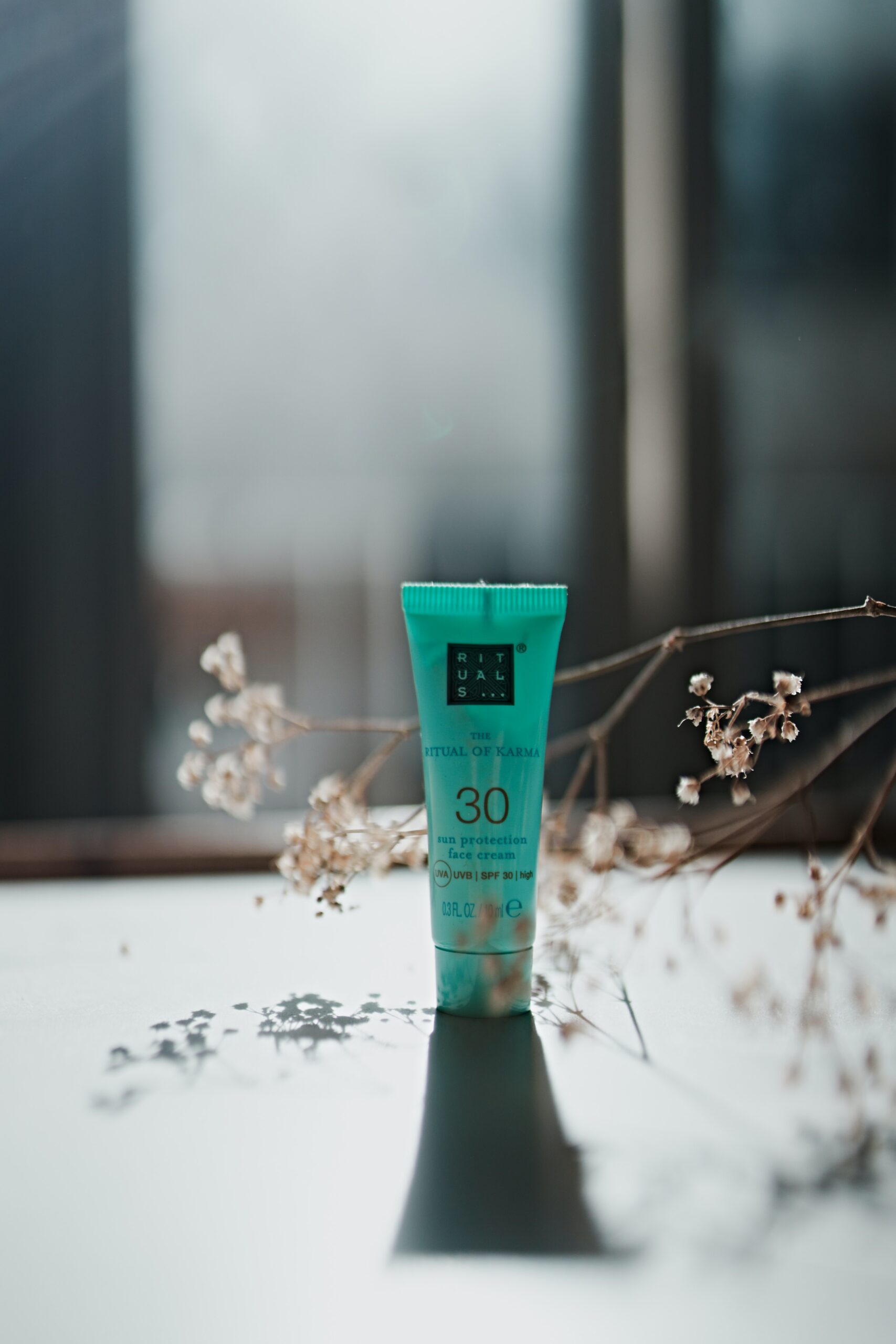Health risks and environmental impact due to the use of sunscreens.
Human exposure to solar ultraviolet radiation (UVR) continues to be a major public health concern with skin cancer cases increasing annually. Aside from sun avoidance, the major protective measure taken against UVR is the use of physical and chemical UV filters formulated into sunscreens. There is a growing concern that the UVR blocking chemicals used in these products may cause damaging secondary effects including skin problems, absorption of unwanted chemicals into the blood system, and damage to delicate coastal ecosystems.
Before discussing the possible effects of sunscreen, it is necessary to understand what they are, and how they protect people from the sun. Sunscreens contain chemical compounds that act to block ultraviolet radiation, which is light with wavelengths shorter than visible light that is subdivided into ultraviolet A (UVA I and II), ultraviolet B (UVB) and ultraviolet C (UVC). Sunscreen active ingredients have been grouped into chemical absorbers (organic) and physical blockers (inorganic) depending on the mechanism of action. Chemical sunscreens are generally aromatic compounds conjugated with a carbonyl group. Examples are avobenzone, oxybenzone, and sulisobenzone. This general structure allows the molecule to absorb high-energy UV rays and release the energy as lower-energy rays, thereby preventing the skin-damaging UV rays from reaching the skin. On the other hand, physical blockers or non-chemical sunscreens reflect or scatter UVR. They contain inert minerals such as titanium dioxide or zinc oxide.

Sunscreens were created almost 100 years ago, and since then, they have been the subject of many scientific articles around the world addressing the effectiveness of sunscreens in the prevention of skin cancer, signs of photoaging including wrinkles and pigmentation changes in the skin. In 2016 in a study published by the Journal of Clinical Oncology where a prospective population-based study was performed on Norwegian Women aged 40 to 75, researchers reported that the use of SPF ≥ 15 rather than SPF < 15 sunscreens reduce melanoma risk. Moreover, they showed that the use of SPF ≥ 15 sunscreen by all women aged 40 to 75 years could potentially reduce their melanoma incidence by 18%. More recently scientists have turned to studying the long-term effects of using sunscreens. One of the main concerns regarding the use of sunscreen, is the effect on people with underlying skin conditions. The dilemma appears when people use sunscreen to be protected from the sun but at the same time the active chemical ingredients of the sunscreens trigger skin problems that affect the user. One example is irritant contact dermatitis which is the most common form of dermatitis. This type of dermatitis occurs when the user has a nonallergic sensitivity to the ingredients in sunscreen. People at a higher risk of having irritant contact dermatitis are those with a history of eczema. Another example is allergic contact dermatitis. In this case the user may have a skin allergy to the active ingredients in the sunscreen like oxybenzone or benzophenone 3. Allergic contact dermatitis involves an overactive immune response that results from contact with an allergen on the skin. Finally, photo contact dermatitis accounts for a very small percentage of contact dermatitis. Some individuals experience an interaction between sun exposure and certain ingredients in the sunscreen that causes the skin to react and become irritated.
Recently, concerns over the safety of sunscreen ingredients were raised when two studies by scientists at the FDA found that people absorbed active ingredients found in sunscreens through their skin and into their bodies. In a 2019 study, 24 people experienced systemic absorption of four active ingredients (oxybenzone, avobenzone, octocrylene and ecamsule) when used over a period of four days. Two years later, in another study, 48 participants showed absorption of 6 active ingredients, some chemicals remaining in the body for up to 3 weeks. Scientists noted that their studies should not be used to discourage people from using sunscreens, rather they suggested that further research is necessary to determine the effects of the internal absorption measured in the study. In contrast to chemical sunscreen ingredients, physical sunscreens are not systemically absorbed.
Beyond human health, some recent studies have reported that chemical sunscreen ingredients were detected in various water sources despite waste-water treatment processing. A new concern is the detection of sunscreen filters in the tissues of various fish species, raising the possibility of bioaccumulation and biomagnification. The damaging effects of two sunscreen ingredients like oxybenzone and octinoxate, on coral reef ecosystems prompted Hawaii to ban the sale of sunscreens with these ingredients in 2021. Finally, the effects of sunscreen ingredients on coral reefs are a current focus of scientific investigation.
Today, the scientific community agrees that excessive exposure to ultraviolet radiation is directly harmful and has been associated with the development of skin cancers and accelerating photoaging. Outstanding evidence has shown that sunscreen reduces the risk of developing both melanoma and nonmelanoma skin cancer. Consequently, doctors may continue advising patients on photoprotection strategies, including avoiding many hours under the sun, looking for shade in peak hours and wearing protective clothing, as well as applying sunscreen if sun exposure cannot be avoided. More consistent evidence is still needed to really prove that some sunscreen ingredients are creating or worsening skin conditions; that they are systemically absorbed by our bodies; and to prove that such ingredients are contributing to environmental damage. For now, research on the security and efficacy of traditional and novel sunscreens is in progress.
References
https://www.ncbi.nlm.nih.gov/pmc/articles/PMC3482794/
https://www.ncbi.nlm.nih.gov/pmc/articles/PMC7759112/#b49-192e1802
https://nationaleczema.org/blog/sunscreen-avoid-flaring/
https://jamanetwork.com/journals/jama/fullarticle/2733085
https://jamanetwork.com/journals/jama/fullarticle/2759002?guestAccessKey=81a4a1e1-66d2-4f85-8d80-8d4d1aa1c56e&utm_source=For_The_Media&utm_medium=referral&utm_campaign=ftm_links&utm_content=tfl&utm_term=012120
https://sunbutteroceans.com.au/blogs/sunbutter-news/when-was-sunscreen-invented-the-history-and-evolution-of-sun-protection
https://www.yalemedicine.org/conditions/sun-damage#:~:text=Pigmentation%20changes%20such%20as%20age,around%20the%20nose%20and%20chest
https://ascopubs.org/doi/10.1200/JCO.2016.67.5934
https://www.ncbi.nlm.nih.gov/pmc/articles/PMC3482794/
https://nationaleczema.org/blog/sunscreen-avoid-flaring/

